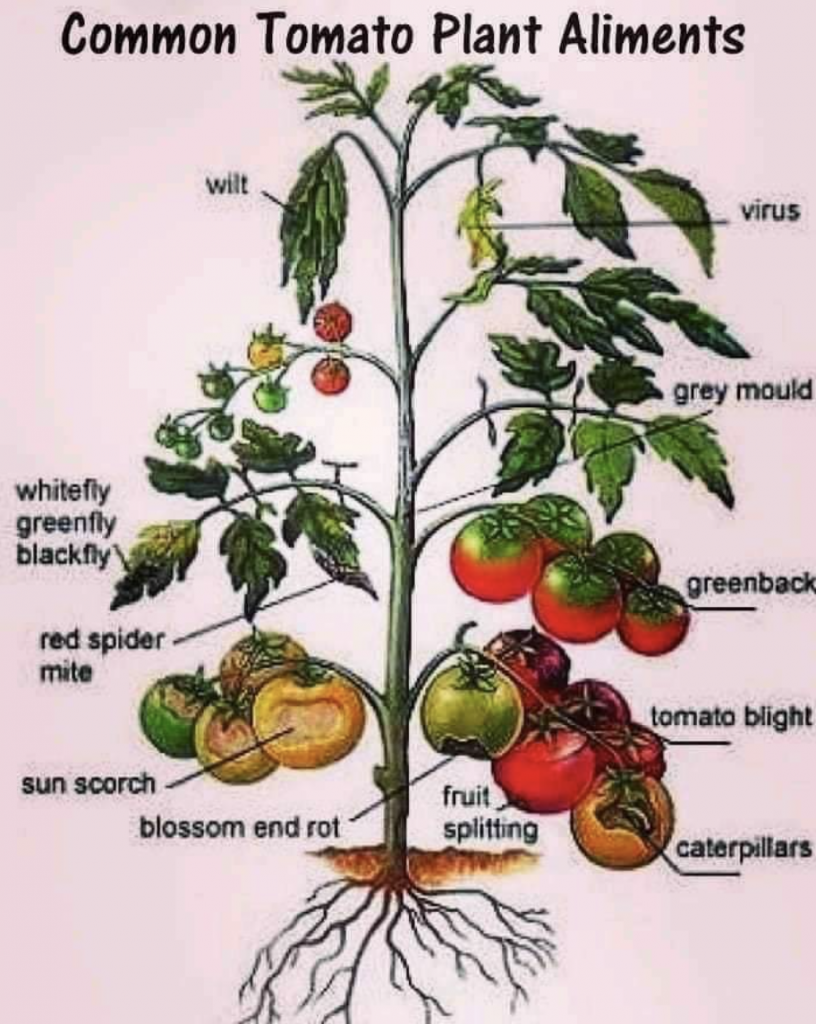
Tomato Disease ID

Portal for the icow Apps content

Credits: Biovision-Infonet
Choice of mask is very important. Surgical masks worn correctly are the best. They are water proof on the outside and absorbent on the inside, ONLY if WORN CORRECTLY.
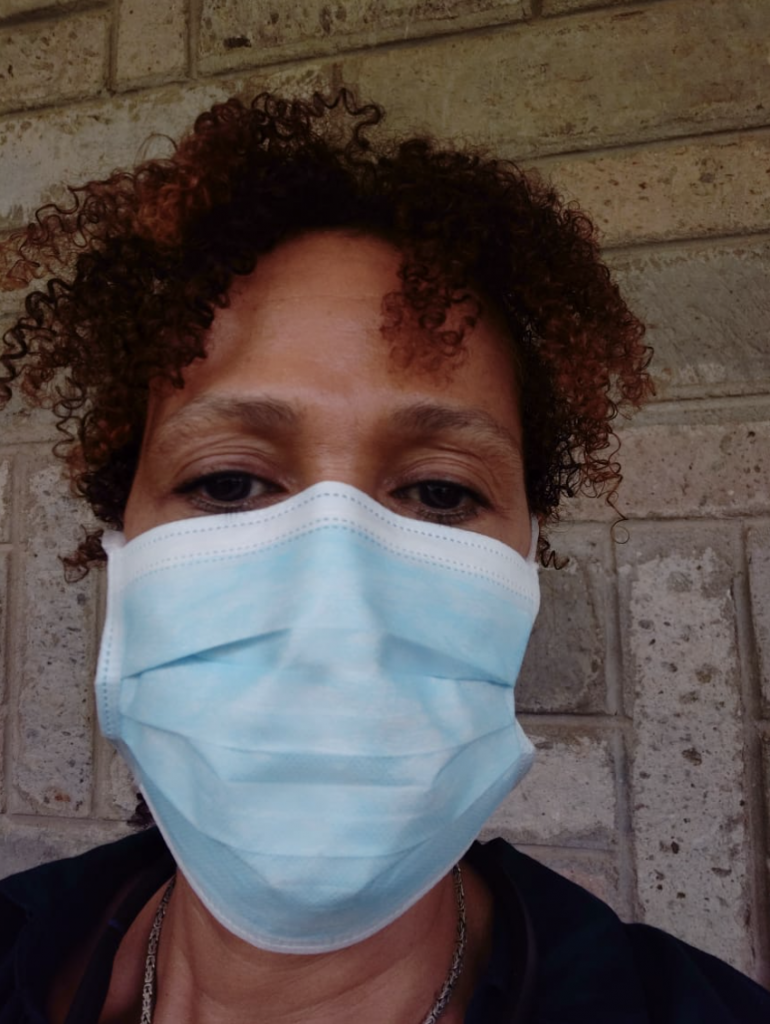
To wear your mask correctly, make sure the blue side is on the outside. It is water proof and will protect outside germs from coming into your respiratory system and will protect others by absorbing your respiration on the inner absorbent side.
To be effective, your mask MUST cover your nose as well as your chin. Pull it down under your chin. Crimp or squeeze the metal strip on the upper side to fit securely over your nose.
Tie the ends firmly behind your ears.
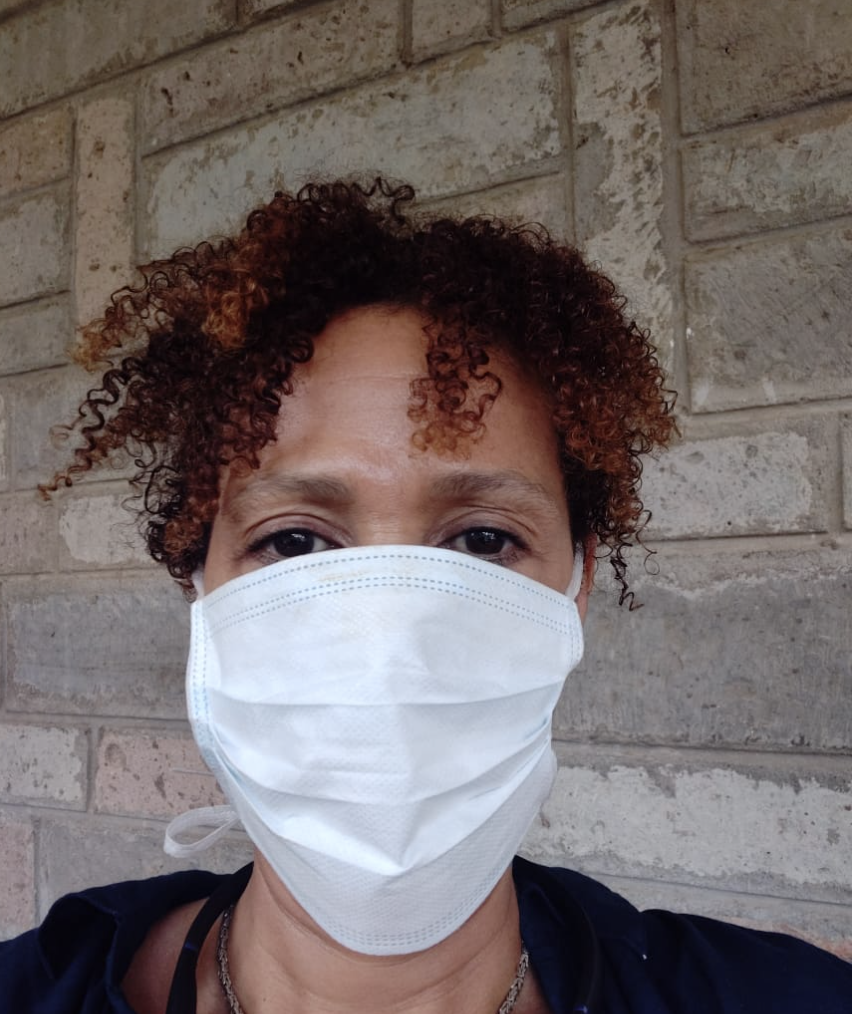
Incorrect, mask is inside out.
If you see anyone wearing their mask incorrectly, mention this to them and advise them how to wear the correctly. Do so without touching other peoples masks.
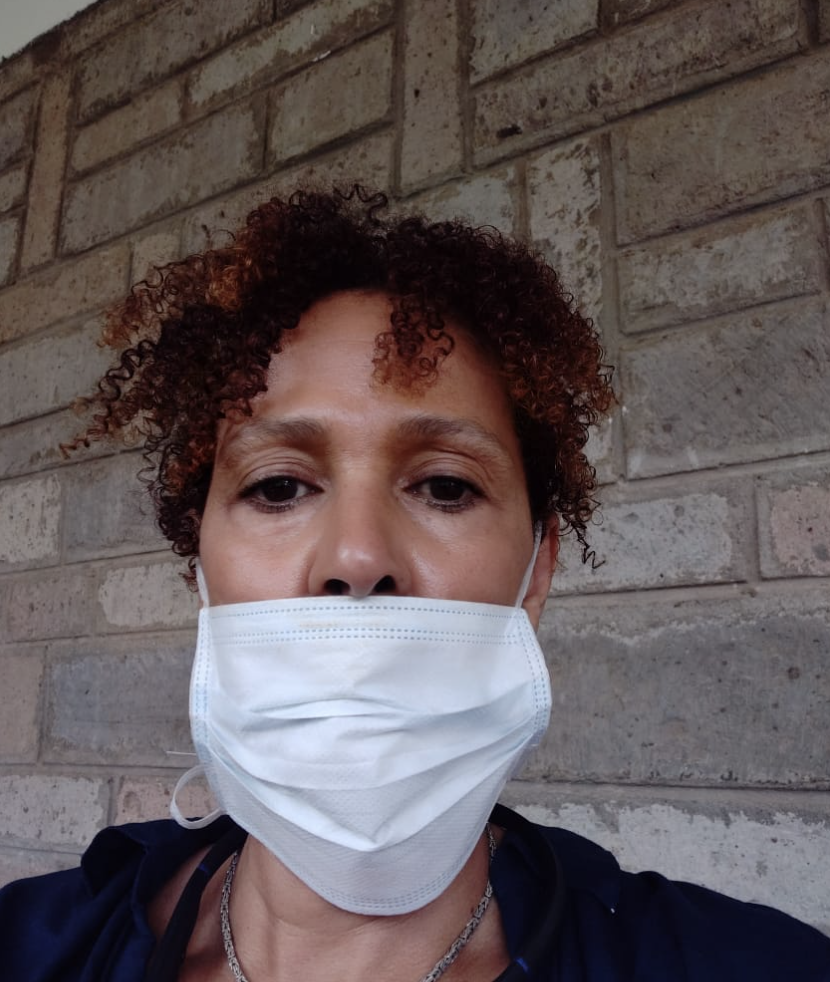
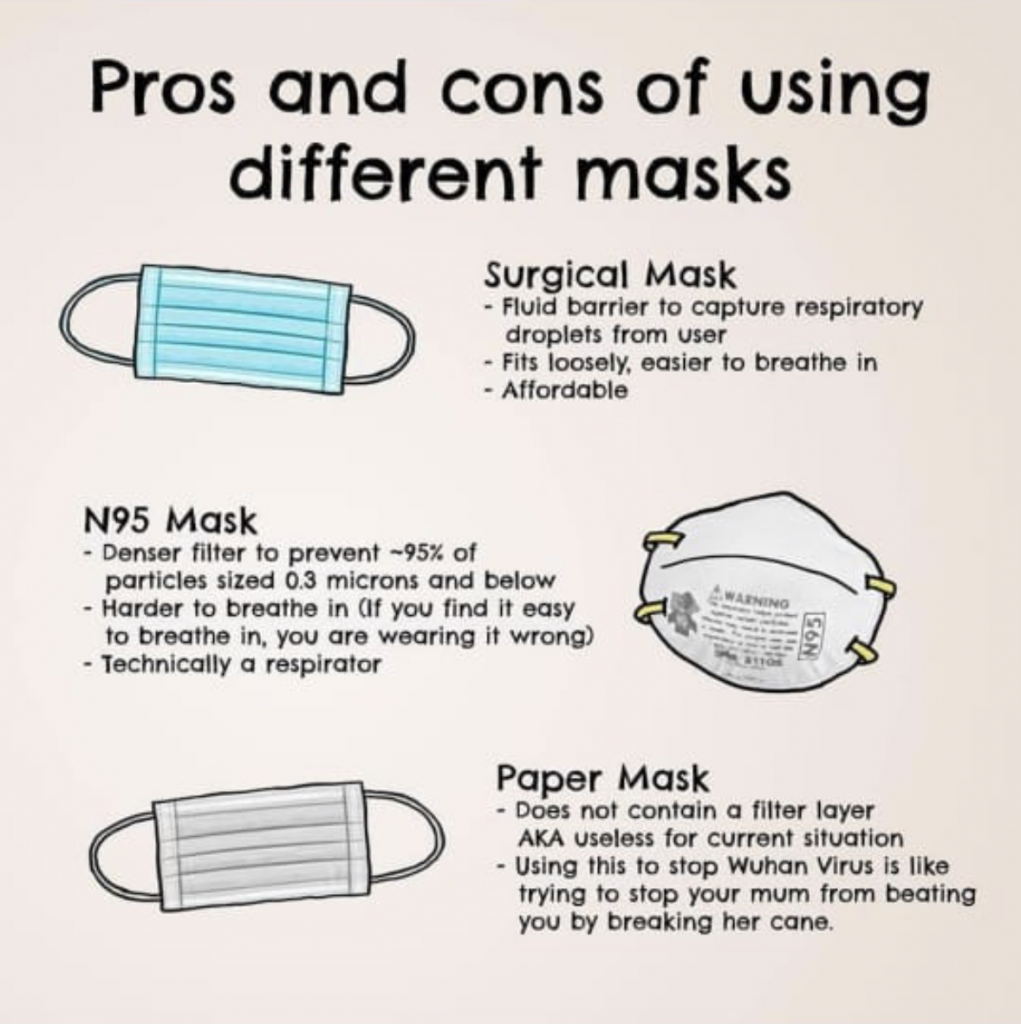
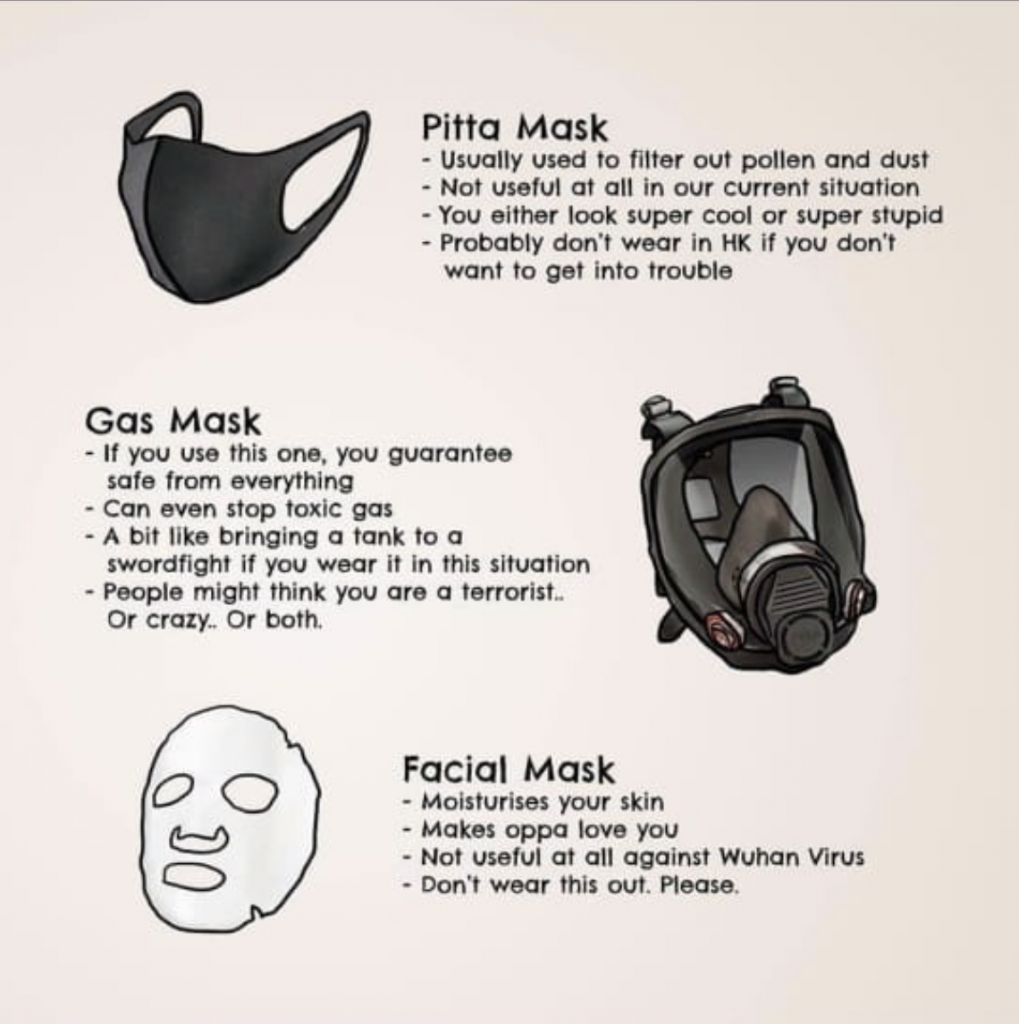
Credits: Biovision-Infonet
Planned breeding programs yield the best results when the breeder considers the production and other trait characteristics in individual cows and how they can be passed on to offspring. The breeder must also be able to match these characteristics to what the market demands.
Inbreeding may be defined as mating of individuals more closely related than the average relationship of the population. The decrease in fitness that results from such inbreeding is known as inbreeding depression.
In small herds inbreeding is a real danger for continued productivity of livestock. Inbreeding can lead to smaller animals, less productive animals, high incidences of deformities and low disease resistance among other undesirable characteristics.
By having a good breeding strategy such inbreeding can not only be totally avoided, but the opposite can be achieved namely higher productivity, better milk and meat yields, healthy animals with good disease resistance just to mention a few of the most common goals for breeding strategies
Farm animals are very sensitive to inbreeding, and usually full-sibling matings should not be done because of a marked decrease in viability and fertility. Breeding within small populations, such as a herd, without introduction of new animals from outside (not related to the herd or flock), leads automatically to a certain amount of inbreeding.
All cows and bulls, even the very best bull, in any breed, have genetic traits that could be desirable or undesirable from a farmers perspective. The problem arises when from in both parents the genetics for the same undesired traits are present Imagine that this trait is present in a particular bull, and that bull is very popular (because he also has some desirable trait, such as superior milk production in daughters). As this bull is bred to many females, half of the resultant offspring would now carry the undesired trait possessed by that bull. If these individuals are mated to one another, then 25% of their offspring would have double the undesired trait (one from each parent), and another 50% would carry the undesired trait in their genetic base. In this extreme form of inbreeding, in just two generations the defect went from being expressed in one out of all the animals to one out of every four animals, with three-quarters of the animals now carrying the defect.
In farm animals, each male may be used to serve a large number of females, and under such conditions the increase of the inbreeding coefficient per generation in a closed breeding unit can be estimated simply by dividing 100 by eight times the number of males used. Thus, when only one homebred sire is used, the decrease in heterozygosity (variability) in each generation is 12.5 percent.
When AI (Artificial Insemination) is used, a small number of sires again are used to serve a large number of females. Nevertheless, the reduction in heterozygosity may be relatively small in such cases, because many young sires are used for progeny testing, and several tested sires enter into service each year. The modern trend in artificial insemination is to use the tested sires for only relatively short periods of time, after which they are replaced with younger sires, which presumably have made even better records. Such rapid turnover in sires serves also to reduce the length of the generation interval in breeding programs. On the other hand, very popular bulls serve worldwide a million cows
When two lines are crossed, then any undesired traits present in one line but not in the other are masked (hidden) and there is typically a boost in the fitness of the offspring. This effect is known as heterosis or hybrid vigor, and is the opposite of inbreeding. This effect even extends to crosses between breeds of cattle, which is why crossbreeding programs are popular (for producing cattle for beef operations, for instance). Essentially, one can get many of the benefits of two breeds of cattle in the first generation of a cross by using unrelated parent stock.
The cheapest way of making sure no inbreeding takes place is to:
Genes determine the way animals look – the observable trait. Thus the length of ear in sheep is the expression of the genes that regulate ear length. The breeder can only plan according to the trait observed. Repeatability and heritability are two kinds of observation that the breeder can use.
Selection may be direct or indirect. The direct method selects sheep having the best expression of the trait to be improved. Indirect selection improves a trait by selecting sheep with a related trait. The effectiveness of indirect selection depends upon the correlation between two traits. This is of great importance since animal breeding usually involves more than one trait. An example of indirect selection is given by high growth rate, where selection for this trait is likely to improve early maturity and slaughter weight and also the efficiency of feed conversion.
Depending on your goals for breeding animals different breeding techniques can be used. The following is a brief overview of some breeding methodologies. The majority are not practical for most people, but for the dedicated animal breeder combinations can be used depending on the breeding strategy.
Table comparisons of results of inbreeding/linebreeding and outbreeding
| Trait | Inbreeding/linebreeding | Outbreeding |
| Uniformity | Good | Poor |
| Fertility | Poor (to good with selection) | Good |
| Growth | Poor (to good with selection) | Good |
| Predictability | Good | Poor |
| Longevity | Moderate | Good |
by Marete, 2011
Distinct objectives are essential to a breeding plan aiming to improve our livestock breeds for better future profitability such as:
1. Higher milk yield
2. Better milk composition (depends on your market)
3. Good udder or body shape
4. Higher beef/meat quality
5. Higher growth rate (also related to good nutrition)
6. Better disease resistance
7. Better fit to available feed and other circumstances
8. Color preference
9. Polled/non polled etc.
Both quantity and quality must go together for efficient production.
Genes determine the way animals look. For example the coat colour in cows is the phenotypic expression of the genes that regulate coat colour. The breeder can only plan according to the trait observed. Other genes determine whether the udder will be small or large, whether the animal has horns, the size of the body etc.
1. To increase milk production in zebu cattle: This can be achieved by upgrading the Zebu breed with a proven exotic dairy breed (Jersey, Guernsey, Friesian) upto the fourth generation or the larger and more productive Boran or Sahiwal cow depending on disease pressure in your area.
2. To increase disease resistance in exotic dairy breeds: Introduction of animals with better resistance to disease such as Boran or Sahiwal will improve the disease resistance of the dairy breeds. The cross bred offspring may take more after one parent than the other, but there are very good experiences with such crosses.
3. Better performance within a breed: If natural breeding is practiced – exchange the bull if the offspring consistently have undesirable traits.
If AI is practiced – look carefully at the pictures and specifications of sires offered to determine whether the proposed sire will add better body conformation to the animal offspring. Some AI semen providers will supply pictures of offspring, with strengths highlighted.
N/B: The successive offspring from the initial/ subsequent crossing is the one used for successive matings and not the original dam.
Table of some choices of breeding strategy for different producer goals
| Goal | Inbreeding/linebreeding | Outbreeding |
| Uniform offspring crops | Good choice with selection | Good in first cross, then poor |
| Supreme show animals | Poor in most cases | Good if non-uniform goats |
| Rapid growth meat animals | Moderate at best | Good to excellent |
by Marete, 2011
Individuals selected must possess desirable characteristics which have good repeatability and heritability and will, therefore, be passed on to offspring. Selection aims to change the gene frequencies in order to improve the subsequent generations.
Selection may be direct or indirect. The direct method selects cows having the best expression of the trait to be improved. Indirect selection improves a trait by selecting cows with a related trait. The effectiveness of indirect selection depends upon the correlation between two traits. This is of great importance since animal breeding usually involves more than one trait. An example of indirect selection is given by high growth rate, where selection for this trait is likely to improve early maturity and slaughter weight and also the efficiency of feed conversion.
Selection of breeding animals is based on:
Then mates are assigned accordingly.
The following methods are used in breeding:
This is a book which contains all the proven animals, their parentage and how one can acquire them. For registered pedigree grade cattle, its best to consult the KSB. When trading in breeding cattle, it is often found that registration with the Kenya stud book, will more than double the price of your animals. Buyers want to know the history of their breeding stock and how to choose the mates without resorting accidentally to inbreeding through AI, and they are willing to pay for this service. The Kenya stud book personnel will also give advice on good breeding strategies suited to your situation. Here is an extract from the Kenya stud book website (need to log in): http://www.klbo.co.ke/
Credit: CDC January 30th 2020
Q: What is 2019 Novel Coronavirus?
A: The 2019 Novel Coronavirus, or 2019-nCoV, is a new respiratory virus first identified in Wuhan, Hubei Province, China. Learn about 2019 Novel Coronavirus.
Q: What is a novel coronavirus?
A: A novel coronavirus (CoV) is a new coronavirus that has not been previously identified.
Q: What is the source of 2019-nCoV?
A: Public health officials and partners are working hard to identify the source of the 2019-nCoV. Coronaviruses are a large family of viruses, some causing illness in people and others that circulate among animals, including camels, cats and bats. Analysis of the genetic tree of this virus is ongoing to know the specific source of the virus. SARS, another coronavirus that emerged to infect people, came from civet cats, while MERS, another coronavirus that emerged to infect people, came from camels. More information about the source and spread of 2019-nCoV is available on the 2019-nCoV Situation Summary: Source and Spread of the Virus.
Q: How does the virus spread?
A: This virus probably originally emerged from an animal source but now seems to be spreading from person-to-person. It’s important to note that person-to-person spread can happen on a continuum. Some viruses are highly contagious (like measles), while other viruses are less so. At this time, it’s unclear how easily or sustainably this virus is spreading between people. Learn what is known about the spread of newly emerged coronaviruses.
Q: Is 2019-nCoV the same as the MERS-CoV or SARS virus?
A: No. Coronaviruses are a large family of viruses, some causing illness in people and others that circulate among animals, including camels, cats and bats. The recently emerged 2019-nCoV is not the same as the coronavirus that causes Middle East Respiratory Syndrome (MERS) or the coronavirus that causes Severe Acute Respiratory Syndrome (SARS). However, genetic analyses suggest this virus emerged from a virus related to SARS. There are ongoing investigations to learn more. This is a rapidly evolving situation and information will be updated as it becomes available.
Q: How can I help protect myself?
A: Visit the 2019-nCoV Prevention and Treatment page to learn about how to protect yourself from respiratory illnesses, like 2019-nCoV.
Q: What should I do if I had close contact with someone who has 2019-nCoV?
A: There is information for people who have had close contact with a person confirmed to have, or being evaluated for, 2019-nCoV infection available online.Top of Page
Q: What are the symptoms and complications that 2019-nCoV can cause?
A: Current symptoms reported for patients with 2019-nCoV have included mild to severe respiratory illness with fever1, cough, and difficulty breathing. Read about 2019-nCoV Symptoms.
Q: Should I be tested for 2019-nCoV?
A: If you develop a fever1 and symptoms of respiratory illness, such as cough or shortness of breath, within 14 days after travel from China, you should call ahead to a healthcare professional and mention your recent travel or close contact. If you have had close contact2 with someone showing these symptoms who has recently traveled from this area, you should call ahead to a healthcare professional and mention your close contact and their recent travel. Your healthcare professional will work with your state’s public health department and CDC to determine if you need to be tested for 2019-nCoV.
Q: How do you test a person for 2019-nCoV?
A: At this time, diagnostic testing for 2019-nCoV can be conducted only at CDC.
State and local health departments who have identified a person under investigation (PUI) should immediately notify CDC’s Emergency Operations Center (EOC) to report the PUI and determine whether testing for 2019-nCoV at CDC is indicated. The EOC will assist local/state health departments to collect, store, and ship specimens appropriately to CDC, including during afterhours or on weekends/holidays.
For more information on specimen collection see CDC Information for Laboratories.
Q: What should healthcare professionals and health departments do?
A: For recommendations and guidance on patients under investigation; infection control, including personal protective equipment guidance; home care and isolation; and case investigation, see Information for Healthcare Professionals. For information on specimen collection and shipment, see Information for Laboratories.
Q: What is CDC doing about 2019-nCoV?
A: This is an emerging, rapidly evolving situation and CDC will continue to provide updated information as it becomes available. CDC works 24/7 to protect people’s health. It is CDC’s job to be concerned and move quickly whenever there is a potential public health problem. More information about CDC’s response to 2019-nCoV is available online.
Q: Am I at risk for 2019-nCoV infection in the United States?
A: This is a rapidly evolving situation and the risk assessment may change daily. The latest updates are available on CDC’s 2019 Novel Coronavirus website.
Q: Has anyone in the United States gotten infected?
A: Yes. The first infection with 2019-nCoV in the United States was reported on January 21, 2020. See the current U.S. case count of infection with 2019-nCoV.
Q: Am I at risk for novel coronavirus from a package or products shipping from China?
There is still a lot that is unknown about the newly emerged 2019 novel coronavirus (2019-nCoV) and how it spreads. Two other coronaviruses have emerged previously to cause severe illness in people (MERS and SARS). 2019-nCoV is more genetically related to SARS than MERS, but both are betacoronaviruses with their origins in bats. While we don’t know for sure that this virus will behave the same way as SARS and MERS, we can use the information from both of these earlier coronaviruses to guide us. In general, because of poor survivability of these coronaviruses on surfaces, there is likely very low risk of spread from products or packaging that are shipped over a period of days or weeks at ambient temperatures. Coronaviruses are generally thought to be spread most often by respiratory droplets. Currently there is no evidence to support transmission of 2019-nCoV associated with imported goods and there have not been any cases of 2019-nCoV in the United States associated with imported goods. Information will be provided on the 2019 Novel Coronavirus website as it becomes available.
Q: Is it safe to travel to China or other countries where 2019-nCoV cases have occurred?
A: The situation is evolving. Stay up to date with CDC’s travel health notices related to this outbreak. These notices will be updated as more information becomes available.
Q: What if I recently traveled to China and got sick?
A: If you were in China and feel sick with fever, cough, or difficulty breathing, within 14 days after you left, you should
CDC does have additional specific guidance for travelers available online.
Q: What about animals or animal products imported from China?
CDC does not have any evidence to suggest that animals or animal products imported from China pose a risk for spreading 2019-nCoV in the United States. This is a rapidly evolving situation and information will be updated as it becomes available. The United States Department of Agriculture regulatesexternal icon the importation of animals and animal products, and CDC regulates the importation of animals and animal products capable of spreading human disease.
Q: Should I be concerned about pets or other animals and 2019-nCoV?
While this virus seems to have emerged from an animal source, it is now spreading from person-to-person. CDC recommends that people traveling to China avoid animals both live and dead, but there is no reason to think that any animals or pets in the United States might be a source of infection with this new coronavirus.
Q: Should I avoid contact with pets or other animals if I am sick?
Do not handle pets or other animals while sick. Although there have not been reports of pets or other animals becoming sick with 2019-nCoV, several types of coronaviruses can cause illness in animals and spread between animals and people. Until we know more, avoid contact with animals and wear a facemask if you must be around animals or care for a pet.Top of Page
1Fever may not be present in some patients, such as those who are very young, elderly, immunosuppressed, or taking certain fever-lowering medications. Clinical judgment should be used to guide testing of patients in such situations.
2Close contact is defined as—
Credits: Biovision-Infonet
A breed is a race or variety related by descent and similarity in certain distinguishable characteristics. More than 250 breeds of cattle are recognized throughout the World. In Africa there are two main races of Cattle: Bos indicus (cattle with humps) including the Boran, Sahiwal and Zebu cows (indigenous) and the Bos taurus (exotic or imported breeds). The two races can cross breed, and the crosses can be very productive both in terms of growth rates for beef, improved milk production as well as disease resistance.
Kenya has the highest number of exotic dairy cattle. As for indigenous breeds, Kenya also ranks high with Ethiopia and Sudan topping the list of African countries with the highest population of indigenous cattle breeds.
Some agro-ecological zones (AEZ’s) are not suitable for pure breed high yielding milk cows, but can benefit from crossbreeding the local breeds of cattle with exotic breeds. However, this will only be useful if management practices such as improved feeding, plenty of fresh water available, and a reliable source of veterinary drugs are available. Without these conditions the survival rate of exotic breeds and cross breeds is likely to be low. This should be one of the first things to consider in a breeding plan: what animal breed fits best to the circumstances on the farm.
Whether indigenous breeds or exotic breeds or crossbreeds will perform best depend amongst others on the climate, the occurring diseases, the available feed resources and the availability of fresh water.
Exotic breeds are more expensive to buy and require more sophisticated housing facilities. The indigenous breeds are in general more hardy and used to the circumstances, less sensible for diseases and less demanding for quality feed. The production is low, but in most farms the potential is not fully used. Under sub-optimal conditions the indigenous breeds stay healthy and animal welfare is less at risk as with exotic breeds in the same situation. Although production is low, it might be more economically profitable to have indigenous breeds instead of exotic breeds because the needs in feed and healthcare are lower. Breeding possibilities in isolated areas are less than in areas with good infrastructure. Use of local breeding bulls instead of artificial insemination could be a limiting factor in improving the production of local cattle. Working together as farmers group and take initiatives as a group could be advantageous.
The exact origins of the breed are difficult to determine but it is known that in the 18th century, herds of small black-and-white cattle were brought into northern Holland and Friesland from northern Jutland to replace animals that had fallen victim to disease and flooding. These animals were crossed with the existing Dutch cattle and formed the basis of the Friesian.
Before the establishment of the Netherlands herd book in 1873 and the Friesland herd book in 1879, both black-pied and red-pied animals were maintained separately. The preference for black-pied cattle, particularly in the United States, led to the further segregation of red-pied animals and presently this colour variation only exists in small number in the Netherlands.
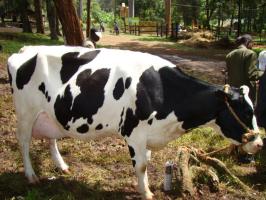

Production levels of this breed declined during the 1950’s when excessive emphasis was placed on correct colour pattern. During the 1970’s Holsteins were imported from the United States and used to improve the milk production. This resulted in larger animals with a more pronounced dairy characteristics. The mixing of these two breeds is such that now many Friesians are 25% to 75% Holstein.
The modern Friesian is pre-eminently a grazing animal, well able to sustain itself over much lactation, on both low lying and upland grassland, being developed by selective breeding over the last 100 years. Some outstanding examples of the breed have 12 to 15 lactations to their credit, emphasizing their inherent natural fecundity. In response to demand, protein percentages have been raised across the breed and herd protein levels of 3.4% to 3.5% are not uncommon.
Purpose: Milk production
Potential yield: 40-50 litres milk/day, 3,2% butter fat.
Average body size: Large (550-650 kg)
Description: Black and white short haired coat, short horns
Friesians and their crossbreeds are predominant in Kenya particularly in Central Kenya and Central Rift Valley.
The farms where they can be found include:
1. Manera (Delamere Estates), Naivasha
2. KARI Naivasha, PO Box 25 Naivasha
3. KAR Lanet, PO Box 1275, Nakuru
4. Agricultural Development Corporation (ADC) Katuke Complex, PO Box 1392-30200 Kitale
5. Makongi Farm, PO Box 1320-30100 Eldoret
6. Kisima Farm, PO Box 19- 20107 Njoro
7. Gogar Farm PO Box 6-201080 Rongai
8. University of Nairobi Farm PO Box 29053-10202 Kabete
9. Sanctuary Farm PO Box 244-20177 Naivasha
10. Marimba Farm PO Box 32 Meru
11. ADC Olngatongo PO Box 680-30200 Kitale
12. Gicheha Farm, PO Box 236 Ruiru
The Ayrshire breed originated from the county of Ayr in Scotland, prior to 1800. The breed was introduced to Kenya in 1908 from South Africa. It has been developed over the last century through inputs of bloodlines from Britain, South Africa, Sweden, New-Zealand, Canada and USA.
Kenya Aryshire cattle breeders emphasize on medium cow balanced for type, production, longer life and fertility. Ayrshire population in Kenya is estimated to be over 1.2 million of which nearly 30’000 are registered.

Purpose: Milk production. Ayrshire milk is referred as “the ideal drinking milk”; it is not excessively rich, not lacking adequate fat, and it possesses desirable quantities of proteins.
Potential yield: 30 litres/day, 4,7% butter fat, depending on feeding and management.
Average yield: 10 litres/day
Average body size: Large (average live-weight 450 kg)
Description:
1. Agricultural Development Corporation (ADC) Katuke Complex, PO Box 1392-30200 Kitale
2. Makongi Farm, PO Box 1320-30100 Eldoret
3. Kisima Farm, PO Box 19- 20107 Njoro
4. Gogar Farm PO Box 6-201080 Rongai
5. ADC Lanet Farm PO B0x 1124-20100 Nakuru
6. University of Nairobi Farm PO Box 29053-10202 Kabete
7. Moi University Farm PO Box 30900-30100 Eldoret
8. Loruk Farm PO Box 104-10400 Nanyuki
9. Waunyomu Ngeke Ranch PO Box 236-00232 Ruiru
10. Sanctury Farm PO Box 244-20177 Naivasha
11. Marimba Farm PO Box 32 Meru
12. KARI Ol Joro Orok Private Bag 20302 Ol Joro Orok
13. ADC Olngatongo PO Box 680-30200 Kitale
14. Sunset Farm PO Box 13366-20100 Nakuru
15. Limuru Agricultural Youth Centre PO Box 30496 Nairobi
16. Chemusian Farm PO Box 86-20107 Menengai
The Guernsey originated on the small Isle of Guernsey, situated in the English Channel just off the coast of France. There is no concrete evidence as to the development of the Guernsey before the 19th Century but there may be some truth in the theory that the Isigny cattle of Normandy and the Froment du Leon breed from Brittany were ancestral relatives of the modern Guernsey.

Purpose: Milk production. Heifers generally come into milk at about two years of age.
Potential yield: 25 litres/day and 4.3% butter fat.
Average body size: Medium (average live-weight 475 kg).
The bull weighs 600 to 700 kg. The average weaning weight of heifers and bull calves is 75 kg.
Description:
1. The colour of the Guernsey varies from yellow to reddish-brown with white patches.
2. They have a finely tuned temperament, not nervous or irritable.
3. Physically the breed has good dairy conformation and presents the visual impression of a plain animal bred for utility rather than good looks.
4. They have an attractive carriage with a graceful walk, a strong back, broad loin, wide rump and deep barrel, strong, attached udder extending well forward, with the quarters evenly balanced and symmetrical.
5. The Guernsey bull has an attractive individuality, revealing ample vigour and masculinity. It has smooth-blending shoulders showing good refinement, strength and even contour.

1. High milk production potential (25 lts/day) with moderate butter fat content 4.3%.
2. Feed requirements: Moderate (65-85 kg fresh forage/day i.e. 2 gunny bags)
3. Guernsey are efficient converters of feed to product, being of intermediate size, Guernsey produce their high quality milk while consuming 20 to 30 percent less feed per pound of milk produced than larger dairy breeds.
4. Guernsey reach reproductive maturity at an early age and can calve at 22 months of age. This provides an early return on investment.
5. Guernsey produce calves big at birth, which are easy to rear.
6. Guernsey are well known for having the minimum of calving complications.
7. Guernsey are adaptable to all climates and management systems and lack any known undesirable genetic recessives.
8. Her fawn and white coat enhances her heat tolerance and reduces heat stress, which adds to her ability to maintain production levels anywhere.
9. They are docile and have an ideal Dairy Temperament.
1. Need plenty of clean water (40 lts/day)
1. Egerton University, PO Box 356, Njoro
2. ADC Lanet Farm PO B0x 1124-20100 Nakuru
3. ADC Olngatongo PO Box 680-30200 Kitale
4. Gicheha Farm, PO Box 236 Ruiru
Despite considerable research, nothing definite is known as to the actual origin of the cattle first brought to Jersey Island. Most research agrees that the Jersey probably originated from the adjacent coast of France, where in Normaaling Jerseys are found.
Purpose: Milk production.
Average yield: 22 litres/day and 6.3% butter fat.
Average body size: Small – medium (350 Kg)
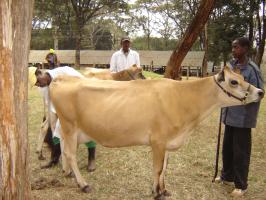
Description:
1. Jerseys in Kenya are typically light brown in colour, though this can range from being almost grey to dull black. They can also have white patches which may cover much of the animal. A true Jersey will however always have a black nose bordered by an almost white muzzle.
2. They have protruding eyes.
3. This breed is well known for milk with high quality – it is particularly richer in fat, protein, minerals and trace elements than those from the larger dairy breeds. The milk is also rich in colour which is naturally produced from carotene.
4. Milk production potential is moderate (20 lts/day), depending on feeding and management regime.
1. Feed requirements is relatively low (65-85 kg fresh forage/day i.e. 2 gunny bags).
2. Milk has high butter fat content 5.2%.
3. It is hardy and adaptable to varied AEZs.
4. The Jersey’s hard black feet are much less prone to lameness.
5. They perform well under a wide range of systems and are well-known for their high feed conversion efficiency.
6. Jerseys generally produce milk components at a lower cost compared to the other major breeds.
7. They stay in the herd longer than any other dairy breed. Her milk has greater nutritional value, plus the highest yield and greater efficiency when processed into cheese and other value-added products.
8. The breed has little or no calving problems, greater fertility, a shorter calving interval, and earlier maturity.
9. Also suitable for cross breeding/ improving local breeds.
1. Susceptible to milk fever and tick borne diseases
1. OlEndeti (Grammaticas) Nairobi, Tel-2067686
2. Ololua Farm (Carol Rees) PO Box 21007 Nairobi, Tel-891015
3. Ontulele (Biddy Davis) Nairobi Tel-891518)
4. Ol Donyo (Tara Llewelyn) PO Box 111 Nanyuki
5. Rawhide (Janet Mills) Nakuru 051-343005
6. ADC Sabwani Complex, PO Box 680 Kitale

Purpose: Meat and milk production
Average body size: Large (average live-weight 750 kg)
Description: Body color brown and white or black and white
1. High production potential with good management and good feeding
By careful selection and application of the strict standards of excellence of the Boran Cattle breeders Society, the Boran breed has been developed into an ideal beef animal suitable for the arid range areas to be found in many parts of the world. The original strains of the breed came from Ethiopia and were adopted early in the 20th Century by commercial cattlemen in Laikipia, Machakos and the Rift Valley Districts of Kenya. The Boran society was formed in 1951 and its panel of inspectors continues to ensure that the breed progresses and keeps up to date with the demands of modern beef production. The society promotes exports of embryos world wide and semen is exported throughout the East African region.
Purpose: Meat and milk production
Average body size: Medium (Average live-weight is 350-400 kg)

The Boran is typically white in colour with dark points and pigmented generally black skin. Steel-grey with black points is not uncommon. Fawn and red also occur, but black is rare and is not considered a true Boran colour. The Breed standard permits all colours except brindle.The head is carried well, of medium length and slightly convex. Ears are small in comparison with the Indian breeds and not pendulous. Horns are generally short, round in cross- section and upright, but there is some variation in size and length. Polled animals are not uncommon and some animals have been selected for this condition.The hump is well defined and thoracic; it is larger in the male than in the female. The Boran shows a surprisingly straight top line for a Zebu animal. The well-developed hindquarters have frequently been remarked upon. The rump is long, wide and muscular in the male and the buttocks are well fleshed. Among Zebu breeds the Boran is outstanding in this character.
Skin is generally thin, with loose folds and pliable. Both the dewlap and umbilical folds are well developed.The Boran is generally vigorous and alert. Being accustomed to desert condition, it covers vast distances in search of grazing and water and in some areas is only watered on alternate days or on the third day.
Boran produce a calf a year. Even under harsh conditions the Boran cow will continue to breed and rear calves and do this without punishing herself. One explanation for this high fertility is that the cow has relatively low body weight loss over the suckling period, thereby maintaining a good condition, thus able to conceive again.
Boran cattle live a long time. It is quite normal for 15 years old breeding cows to be sound mouthed and it is also on record that a 16 year old Boran bull is still producing high quality semen for artificial insemination.
Boran cattle are recognized as being generally quiet, docile and easy to handle. This trait has developed over many generations of cattle living close to man.
Average weight gains per day on grass & feedlot: Grass = 0.7 – 1.0 kg depending on grass quality. Feedlot = 1.3 kg per day depending on type of cross used (this was found at a recent trial at Marania Farm – Timau where using Boran cross Angus steers & heifers). Trials in Nebraska, USA, show that the Boran and its crosses score consistently better than other Zebu breeds for meat tenderness, carcass marbling and rib eye area. Butchers in Kenya prefer Borans and their crosses for this reason.
The Boran has a useful degree of host resistance to ticks and it is reported that the breed is ‘completely resistant to buffalo fly’. Borans are generally less affected by foot and mouth diseases than exotics and recover faster. It is also clear that the morbidity and mortality rates of East Cost Fever are lower in Boran than in Boss taurus breeds; the Boran being naturally more resistant.
Being an animals which in obliged to walk long distances, selection for perfect feet and leg conformation is necessary for registered cattle.
The herd instinct of the Boran makes it very easy to manage in bush country. They are noted for being able to ‘graze on the trot’ and they will always stay together.
The cow has a well-carried udder with strong attachments and neat, small teats. Boran heifers reach puberty at an average age of 13 months. She is an excellent mother, not only will she feed her calf so well that high weaning weights are attainable, but she guards against predators, and will never allow her calf to get lost in the bush. Calving problems hardly exist. Calves at birth weigh an average of 28 kg for males and females, 25 kg.
Boran cattle have developed adaptive traits of crucial importance for their survival. Some of these characters are – the ability to withstand periodic shortage of water and feed, ability to walk long distances in search of water and feed and ability to digest low quality feeds.
The well-developed beef conformation shows up in carcass appraisals. The depth of eye muscle, marbling, even fat cover and ratio of hind to forequarter make the Boran difficult to beat, hence the preference of Kenya butchers for young, well-finished Boran steers.
1. Docile
2. Milk has high butter-fat of 4.8%
3. Good breeds for marginal areas
1. Milk production potential is low (10 liters/day)
2. Difficult breeders, most mating at night
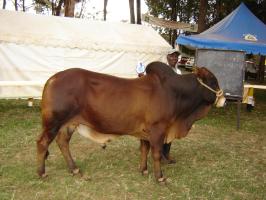
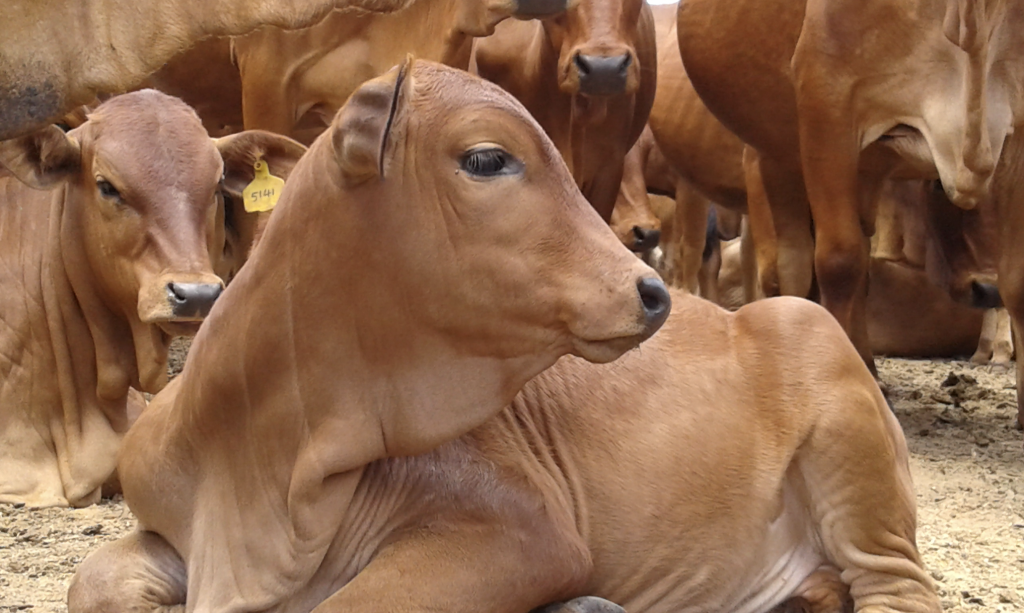
This Zebu breed originates from India and Pakistan. National study was established in 1963 in Naivasha with the purpose of improving the breed for milk and beef i.e. as dual purpose breed. For a long time the breed was confined to government farms where the focus was conservation, characterization, improvement and utilization in smallholder systems. This breed is adapted to utilization of of poor quality pasture and rough terrain.
Purpose: Meat and milk production
The milk yield is highly variable because of variation of management regimes. Yields may range from 5-10 litres/day
Average body size: Large (average live-weight 350-400 kg)
Description: Body colour is solid brown
1. Docile.
2. Good breeds for marginal areas.
3. Milk has high butter-fat of 4.8%
1. Milk production potential is low (10 Kg/day)
2. Difficult breeders, most mating at night
The largest herds in Kenya are kept by KARI, Naivasha and El-Karama Nanyuki.

Purpose: Milk and meat production
Average body size: small (average live-weight 250-300 kg)
Description: Body colour is variable, the breed has a prominent hump
1. Very hardy and disease resistant animal
1. Milk production potential is low (5 liters/day)
2. Late maturing (3 years)
ANKOLE
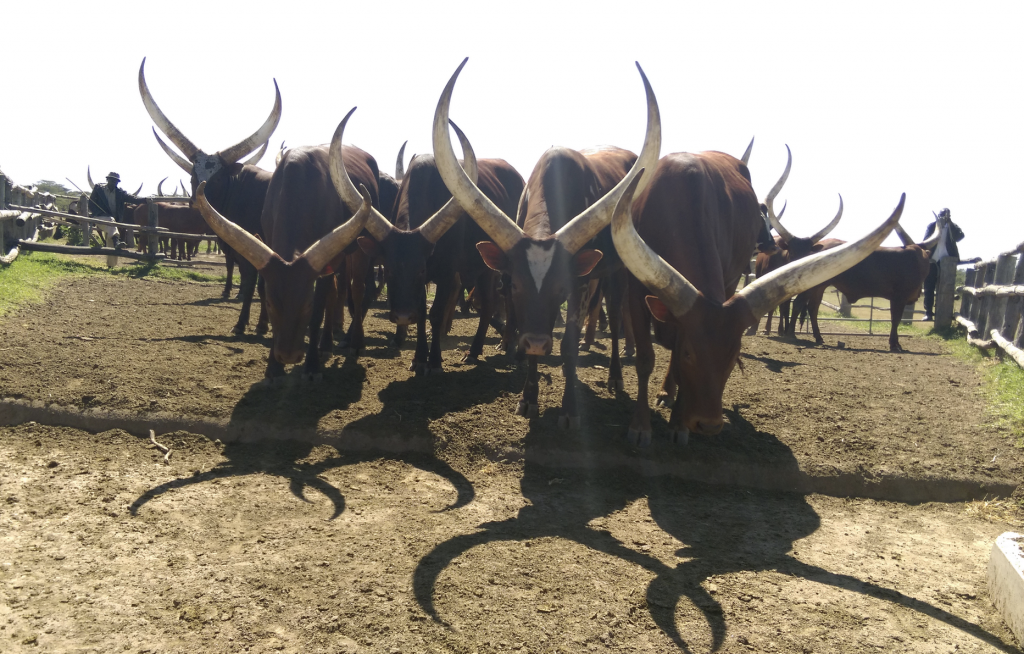
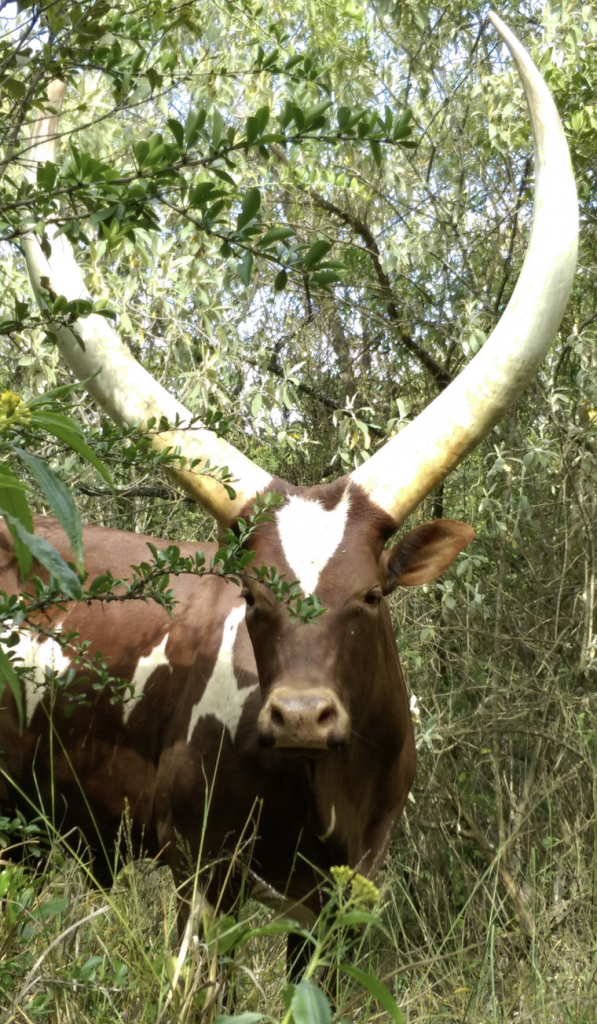
Purpose: Milk and meat production
Average body size: small (average live-weight 350-700 kg)
Description: Body colour is brown red , or speckled white on brown red base
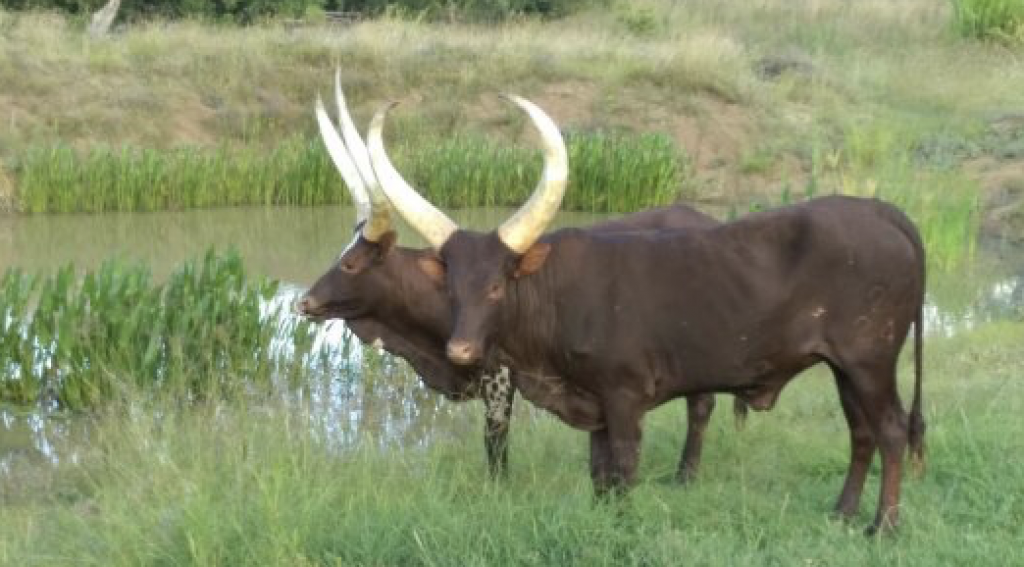
1. Very hardy and disease resistant animal
2. High quality milk
3. Low cholesterol meat
4. Formidable parenting
5. Great calving ease, small calves
1. Milk production potential is low (5 liters/day)
2. Late maturing (2 years)

Purpose: Meat production
Average body size: Large (average live-weight 550 kg)
Description: Body color reddish brown body with white head and feet
1. Good beef conformation for the discerning consumer.
1. High forage requirement
2. As all exotic breeds Hereford is susceptible to tick borne diseases.
3. Only suitable for cool areas with year round quality fodder availability.

Purpose: Meat production
Average body size: Large (average live-weight 800 kg)
Description: Body color white
1. High production potential with good management and good feeding.
2. Good beef conformation for the discerning consumer.
1. Susceptible to tick borne diseases.
2. Only suitable for cool areas with year round quality fodder availability.
Credit: CDC
If you are sick with 2019-nCoV follow the steps below to help prevent 2019-nCoV from spreading to people in your home and community.
You should not leave your home, except to get medical care. Do not go to work, school, or public areas, and do not use public transportation or taxis.
As much as possible, you should stay in a different room from other people in your home. Also, you should use a separate bathroom, if available.
Before your medical appointment, call the healthcare provider and tell them that you have, or are being evaluated for, 2019-nCoV infection. This will help the healthcare provider’s office take steps to keep other people from getting infected.
You should wear a facemask when you are in the same room with other people and when you visit a healthcare provider. If you cannot wear a facemask, the people who live with you should wear one while they are in the same room with you.
Cover your mouth and nose with a tissue when you cough or sneeze, or you can cough or sneeze into your sleeve. Throw used tissues in a lined trash can, and immediately wash your hands with soap and water for at least 20 seconds.
Wash your hands often and thoroughly with soap and water for at least 20 seconds. You can use an alcohol-based hand sanitizer if soap and water are not available. Avoid touching your eyes, nose, and mouth with unwashed hands.
You should not share dishes, drinking glasses, cups, eating utensils, towels, bedding, or other items with other people in your home. After using these items, you should wash them thoroughly with soap and water.
Get medical care quickly if your illness is getting worse (for example if you are having trouble breathing). Call the healthcare provider ahead of time and tell them that you have, or are being evaluated for, 2019-nCoV infection. This will help the healthcare provider’s office take steps to keep other people from getting infected.
Do not handle pets or other animals while sick. Although there have not been reports of pets or other animals becoming sick with 2019-nCoV, several types of coronaviruses can cause illness in animals and spread between animals and people. Until we know more, avoid contact with animals and wear a facemask if you must be around animals or care for a pet.
Credit: CDC
There is currently no vaccine to prevent 2019-nCoV infection. The best way to prevent infection is to avoid being exposed to this virus. However, as a reminder, CDC always recommends everyday preventive actions to help prevent the spread of respiratory viruses, including:
These are everyday habits that can help prevent the spread of several viruses. CDC does have specific guidance for travelers.
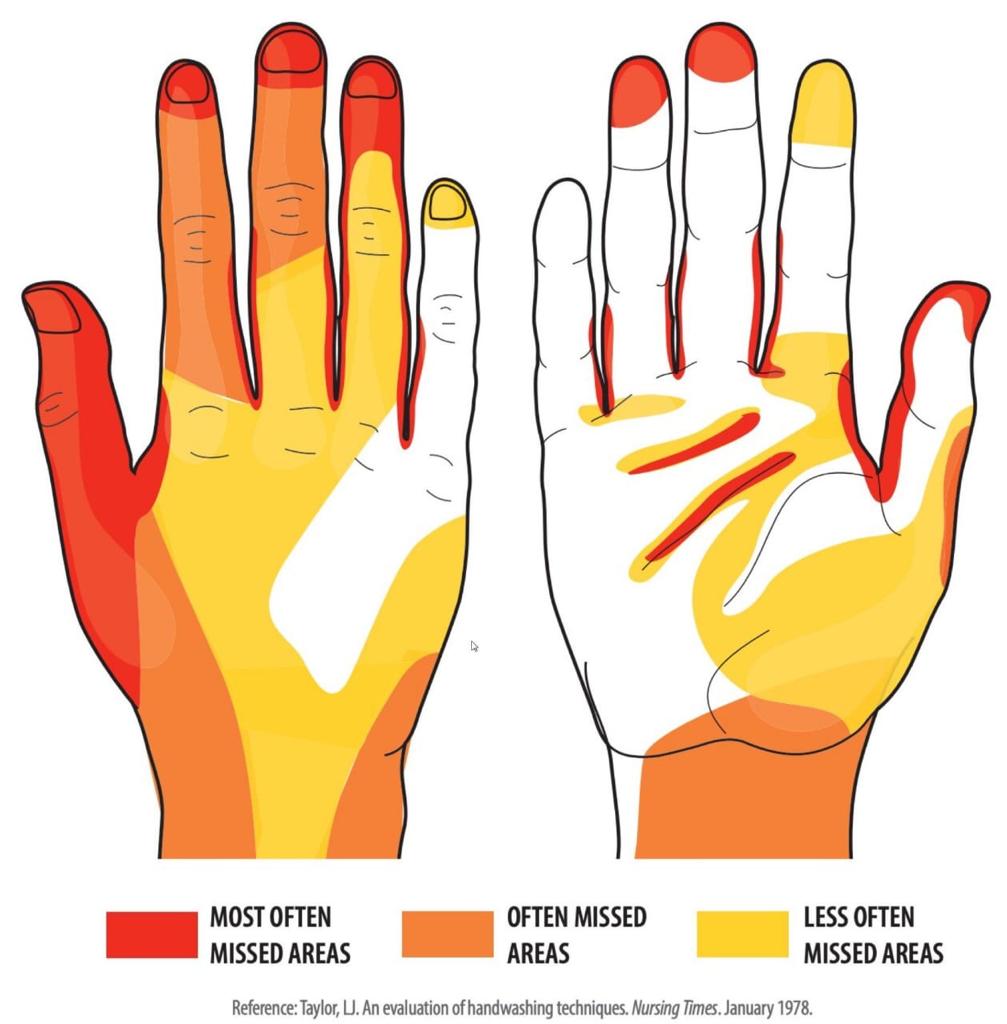
There is no specific antiviral treatment recommended for 2019-nCoV infection. People infected with 2019-nCoV should receive supportive care to help relieve symptoms. For severe cases, treatment should include care to support vital organ functions.
People who think they may have been exposed to 2019-nCoV should contact your healthcare provider immediately.
Credit: CDC
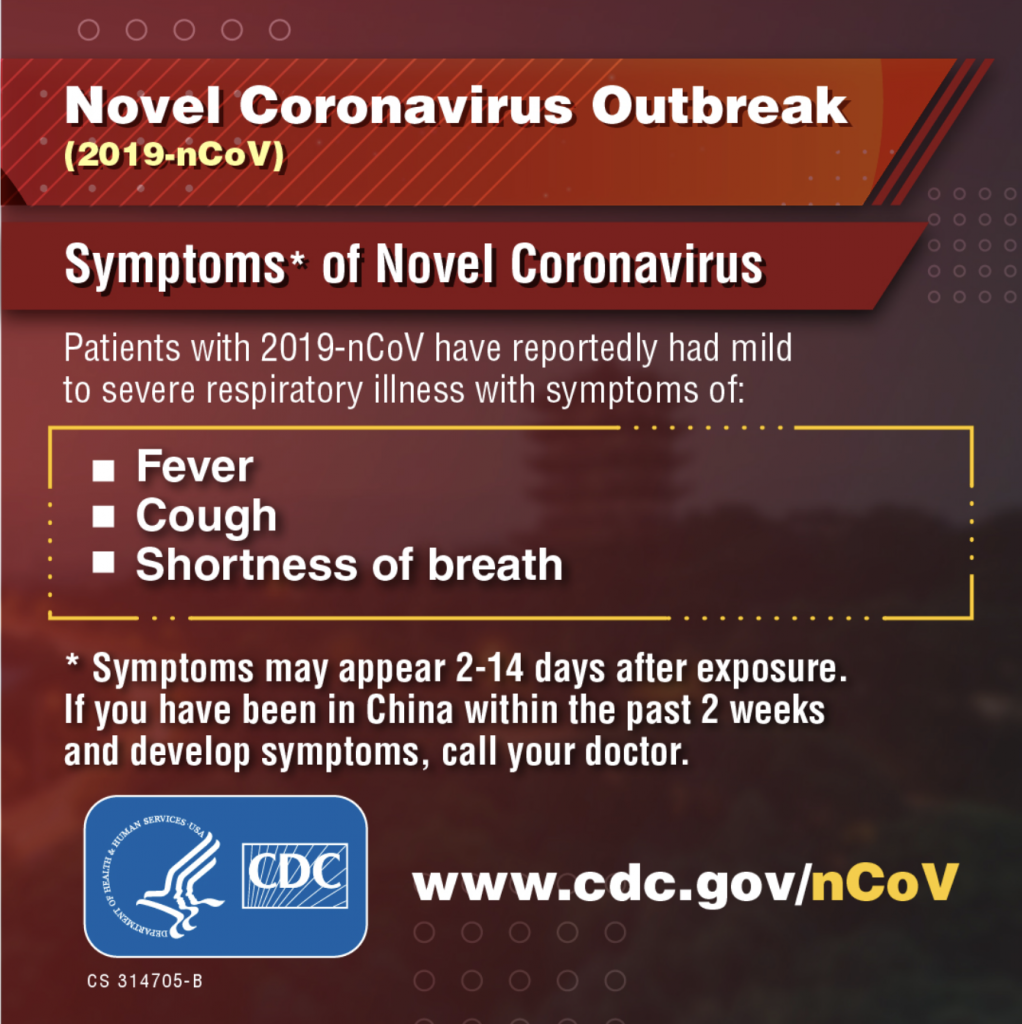
Coronaviruses are a large family of viruses that are common in many different species of animals, including camels, cattle, cats, and bats. Rarely, animal coronaviruses can infect people and then spread between people such as with MERSand SARS.
When person-to-person spread has occurred with MERS and SARS, it is thought to have happened mainly via respiratory droplets produced when an infected person coughs or sneezes, similar to how influenza and other respiratory pathogens spread. Spread of SARS and MERS between people has generally occurred between close contacts.
It’s important to note that how easily a virus spreads person-to-person can vary. Some viruses are highly contagious (like measles), while other viruses are less so. It’s important to know this in order to better understand the risk associated with this virus. While CDC considers this is a very serious public health threat, based on current information, the immediate health risk from 2019-nCoV to the general American public is considered low at this time.
There is much more to learn about the transmissibility, severity, and other features associated with 2019-nCoV and investigations are ongoing. The latest situation summary updates are available on CDC’s web page 2019 Novel Coronavirus, Wuhan, China.
Credit: Centers for Disease Control and Prevention CDC

Coronaviruses are named for the crown-like spikes on their surface. There are four main sub-groupings of coronaviruses, known as alpha, beta, gamma, and delta.
Human coronaviruses were first identified in the mid-1960s. The seven coronaviruses that can infect people are:
People around the world commonly get infected with human coronaviruses 229E, NL63, OC43, and HKU1.
Sometimes coronaviruses that infect animals can evolve and make people sick and become a new human coronavirus. Three recent examples of this are 2019-nCoV, SARS-CoV, and MERS-CoV.
There is an ongoing investigation to determine more about this outbreak. This is a rapidly evolving situation and information will be updated as it becomes available. 2019-nCoV Situation Summary
2019 Novel Coronavirus (2019-nCoV) is a virus (more specifically, a coronavirus) identified as the cause of an outbreak of respiratory illness first detected in Wuhan, China. Early on, many of the patients in the outbreak in Wuhan, China reportedly had some link to a large seafood and animal market, suggesting animal-to-person spread. However, a growing number of patients reportedly have not had exposure to animal markets, indicating person-to-person spread is occurring. At this time, it’s unclear how easily or sustainably this virus is spreading between people. The latest situation summary updates are available on CDC’s web page 2019 Novel Coronavirus, Wuhan, China.